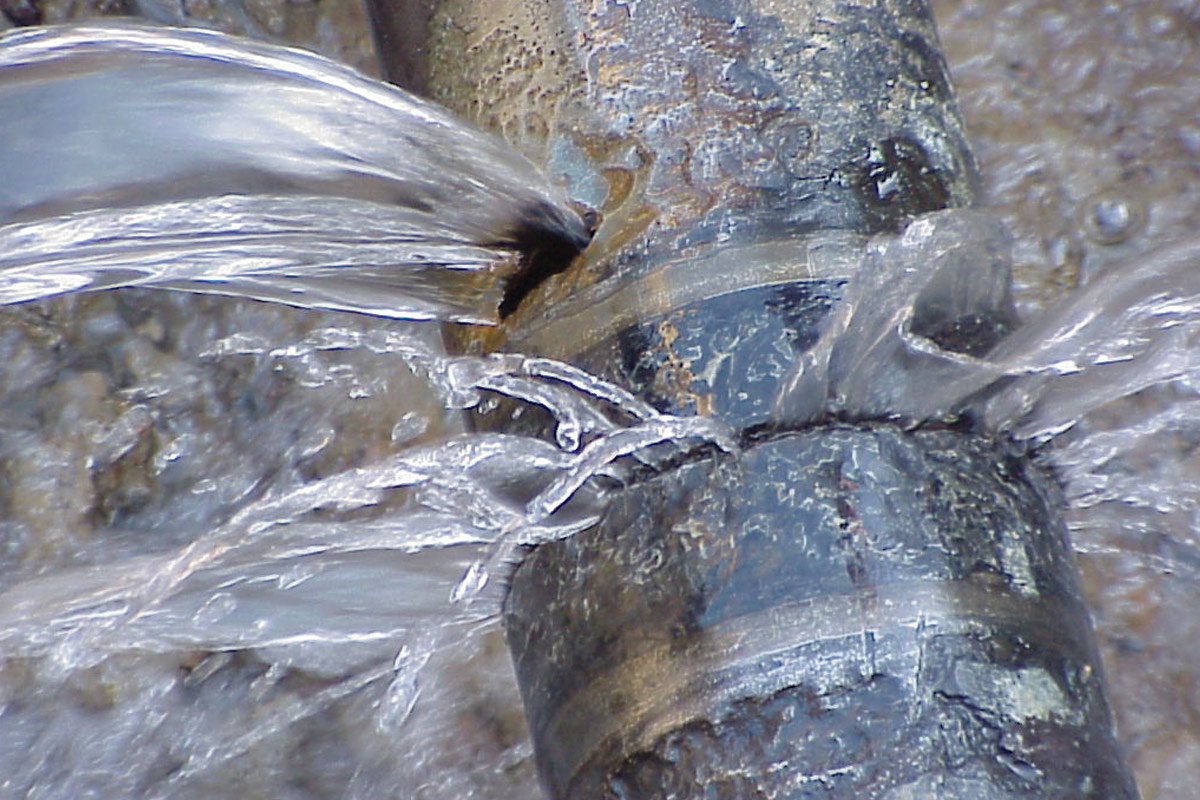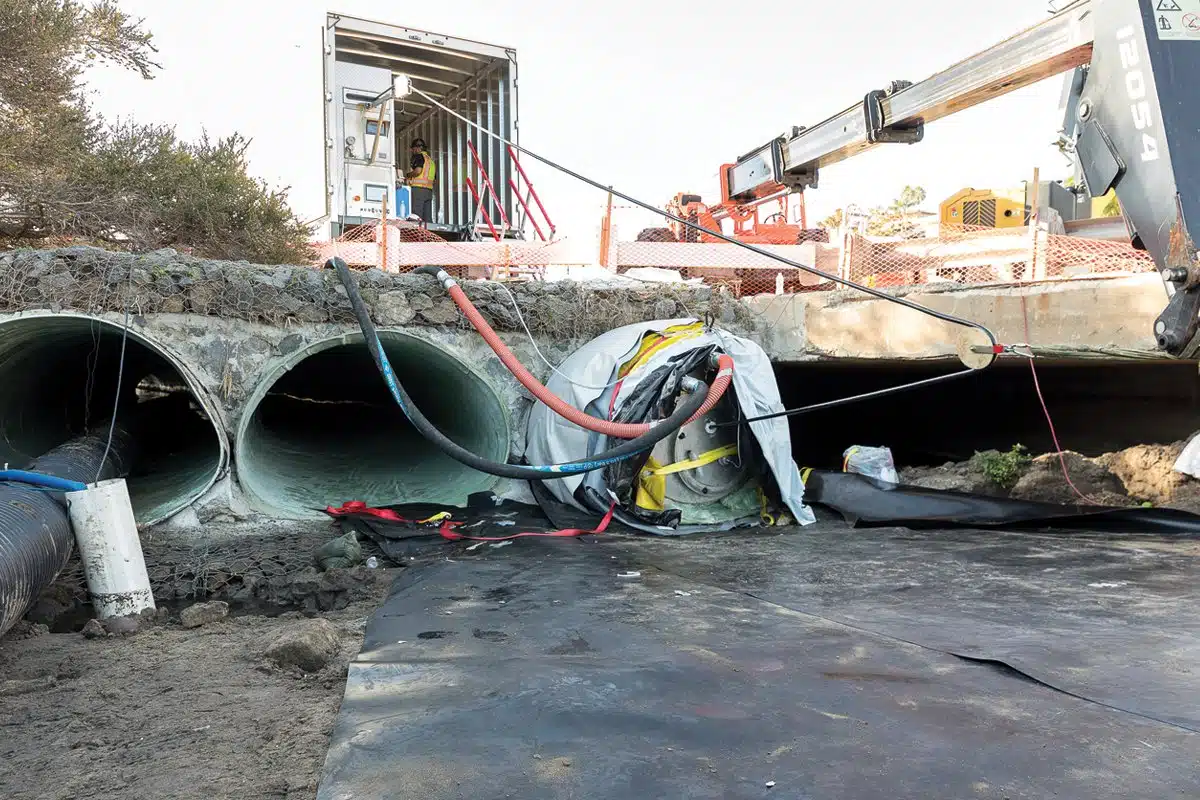
2015 Project of The Year New Installation- Runner Up: Muskrat Falls Project/Strait of Belle Isle Marine Cable Crossing
October 26, 2015

Using a unique approach to horizontal directional drilling technology, drill rigs bored three holes for the transmission cables from the shoreline and out under the seabed at a depth of 70 m to safely avoid potential interaction of the cable with the dozens of icebergs that drift into the Strait of Belle Isle each year.
Nalcor Energy is Newfoundland and Labrador’s energy company and is focused on sustainable development of the province’s energy resources. One of its key projects is the Muskrat Falls Project in Labrador, one of the most attractive undeveloped hydroelectric sites in North America.
The Muskrat Falls hydroelectric development will provide a clean, renewable source of electricity, provide homes and businesses with stable electricity rates, and will be a valuable power-producing asset for the province well into the future.
The project includes construction of an 824-megawatt (MW), hydroelectric dam on the lower Churchill River in Labrador, and more than 1,500 km of transmission lines and associated infrastructure that will deliver electricity to homes and businesses in Newfoundland and Labrador. The hydroelectric facility consists of two dams and a powerhouse, and will be the second-largest hydroelectric facility in the province when complete.
Power generated at Muskrat Falls will be delivered to homes and businesses on the island of Newfoundland via an 1,100 km high voltage direct current (HVdc) transmission line running from Muskrat Falls in central Labrador to the Avalon Peninsula in eastern Newfoundland.
To connect the transmission line from Labrador to Newfoundland, a 35-km marine cable crossing was being constructed across the Strait of Belle Isle, from Forteau Point, Labrador to Shoal Cove, on the island of Newfoundland.
The marine cable crossing included the installation and operation of three marine power cables along the seabed across the Strait of Belle Isle. Using a unique approach to horizontal directional drilling (HDD) technology, drill rigs bored three holes for the transmission cables from the shoreline and out under the seabed at a depth of 70 m to safely avoid potential interaction of the cable with the dozens of icebergs that drift into the Strait of Belle Isle each year.
The HDD program in the Strait of Belle Isle was successfully carried out between December 2013 and October 2014. Each borehole was approximately 1.25 to 2 km long on both sides of the Straits, marking the longest HDD landfall application in the world, according to the contractor.
Here are a few of the factors that made this project so outstanding:
• Saved $10 million in project costs
• Smooth bores to enable world-record breaking cable pull-in length
• Precisely placed bores in iceberg laden waters
• 10,000 m drilled through hard rock
• Less than 2 percent downtime in extremely harsh conditions
Implementing the best HDD technologies while incorporating oilfield drilling technologies and methods proved instrumental for drilling the world’s longest horizontal boreholes drilled from land into the ocean: three on the island, averaging 2,100 m each, and three in Labrador, averaging 1,200 m each, for a total installed conduit length of 9,950 m. Six conduits were installed to protect the shore approach for subsea HVdc cables that are required for completion of the 1,100-km transmission line.
Throughout the HDD program, the main objective was to provide the best conduits to minimize risk of damage to the cables during pull-in from the ocean, while keeping within the following constraints:
 • Not to exceed 50 m below the seabed
• Not to exceed 50 m below the seabed• 75 m water depth targets at Forteau exits
• 70 m water depth at Shoal Cove exits
• Exit angles between 3 and 17 degrees
• Not to exceed 2,200 m length for all conduits
• Path drilled as straight and smooth as possible
Precise borehole placement along with minimal tortuosity and good borehole quality were critical for achieving smooth boreholes into which steel conduits could be inserted for the end result — installation of the subsea cable with the lowest possible pull-in tension.
This project successfully utilized multiple contractors across industry sectors, getting the job right the first time using atypical HDD methods. Although unconventional, the innovative approach to HDD in the Strait of Belle Isle worked very well given the geological conditions in the area and the difficulties encountered in pushing casing out of the seabed.
The Strait of Belle Isle marine cable crossing has pushed the boundaries of conventional HDD applications and identified innovative uses for traditional offshore techniques to develop a tailor-made solution for a challenging northern environment.




